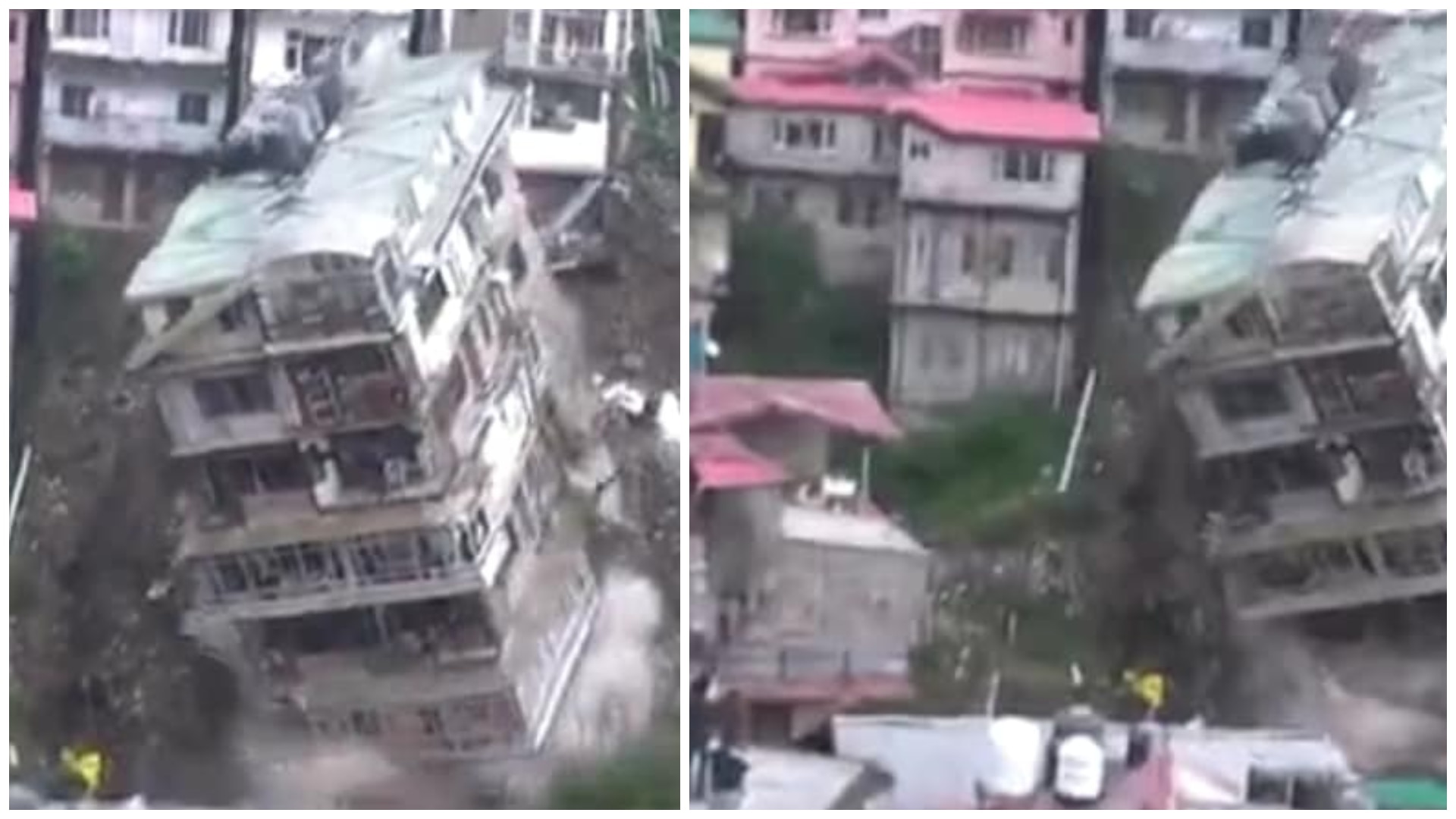Devastating Landslide Triggers Simultaneous Collapse of Multiple Buildings in Himachal Pradesh

Devastating Landslide Triggers Simultaneous Collapse of Multiple Buildings in Himachal Pradesh
In a heart-wrenching incident that unfolded like a nightmare, a massive landslide struck a serene village nestled in the hills of Himachal Pradesh, resulting in the abrupt and catastrophic collapse of multiple buildings. The horrifying scene was captured in a video that has since surfaced, sending shockwaves through the nation. The incident sheds light on the ever-looming threat of natural disasters in hilly terrains and the urgent need for robust disaster management strategies.
The serene village, known for its breathtaking views and tranquil environment, turned into a scene of chaos and devastation in a matter of seconds. The video footage, now circulating widely on social media platforms, captures the terrifying moment when the hillside above the village gives way, triggering a cascade of debris and boulders that bulldozed everything in its path.
Shouts of warning and panic-filled cries can be heard as residents realize the impending danger. Within moments, as the landslide gathers momentum, buildings appear to be swallowed by the earth as if they were mere toys. Clouds of dust and debris fill the air, obstructing visibility and adding to the sense of helplessness.
Local authorities were swift in their response, but the scale of the disaster overwhelmed their initial efforts. Rescue teams equipped with search dogs and machinery rushed to the site to comb through the rubble in a race against time. The video serves as a haunting reminder of the vulnerability of communities settled in geologically unstable areas.
Experts were quick to point out that Himachal Pradesh, like many other hilly regions, is prone to landslides, particularly during the monsoon season when heavy rainfall saturates the soil and destabilizes the slopes. The geological composition of the region, characterized by loose rocks and steep inclines, adds to the risk factors. Despite these known dangers, the allure of living in picturesque landscapes often overshadows the potential hazards.
The power of this tragedy lies not only in its immediate impact but also in the questions it raises about disaster preparedness and response. Natural disasters, though unpredictable, are not entirely unmanageable. Robust urban planning, early warning systems, and community education can significantly mitigate the risks associated with such events.
The heartening aspect amidst this devastation was the outpouring of support from neighboring communities and even from distant corners of the country. Relief organizations, volunteers, and individuals rallied to provide aid and resources to those affected. It is in times of adversity that the strength of unity and compassion truly shines.

As the nation grapples with the aftermath of this tragedy, it serves as a stark reminder of the urgent need for a comprehensive nationwide disaster management framework. The video of the collapsing buildings should serve as a call to action for both government authorities and citizens alike.
One of the key takeaways from this incident is the significance of early warning systems. In a region where natural disasters can strike with little warning, advanced technology can play a crucial role in alerting residents in advance. These warnings could provide vital minutes or even seconds for people to evacuate to safer ground, potentially saving countless lives.
Furthermore, strict building codes and land-use regulations should be enforced rigorously, especially in high-risk areas. It’s essential to strike a balance between development and safety. Properly designed and constructed buildings can withstand the impact of disasters to a significant extent, providing occupants with a higher chance of survival.
Education also emerges as a potent tool in disaster management. Informing residents about the potential risks they face and teaching them how to respond can make a significant difference. Simple knowledge, such as recognizing the signs of an impending landslide or knowing the safest evacuation routes, can prove invaluable in critical moments.
In the wake of this calamity, there is an opportunity for policymakers to reevaluate and strengthen disaster preparedness measures. Adequate funding for infrastructure that can withstand natural forces, training for emergency responders, and resources for public awareness campaigns should all be integral parts of this strategy.

Additionally, community involvement cannot be overstated. Local residents possess invaluable knowledge about their surroundings and can play a pivotal role in disaster mitigation and response. Community drills, workshops, and information-sharing sessions can foster a sense of collective responsibility that ultimately enhances overall resilience.
The haunting video of multiple buildings succumbing to the fury of a landslide serves as a powerful wake-up call. It’s a somber reminder that the forces of nature can be merciless, but they can also serve as catalysts for positive change. The disaster in Himachal Pradesh should urge us all to come together, to prioritize safety over aesthetics, and to invest in a future where such tragedies are minimized, if not entirely prevented.
In the end, it’s the unity of humanity, the shared empathy, and the commitment to learning from the past that will help us heal, rebuild, and face an uncertain future with unwavering determination. The power of nature is awe-inspiring, but the power of human resilience and solidarity is truly unparalleled.




